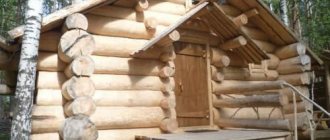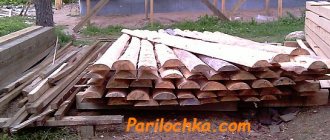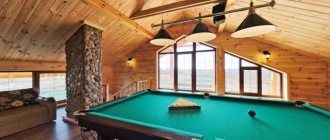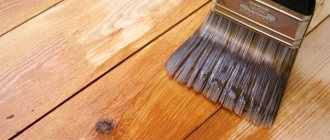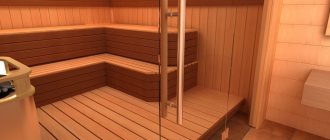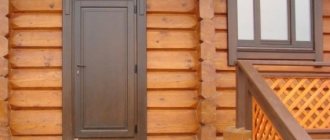SPA
SPA LUX
Rooms with jacuzzi
Rooms with sauna
"Mister Zhulebin Hotel" offers to book exclusive rooms with a sauna and jacuzzi or a SPA complex with a swimming pool, harmoniously combining the services of a mini hotel in Moscow and SPA relaxation.
A room with a salt or infrared cabin is ideal for those who want to improve their health, and the SPA complex, in addition to the pool, includes a Finnish sauna, a Turkish sauna - hammam and a relaxation area and allows our guests to have dinner or hold a small celebration in a cozy and relaxed atmosphere.
If you are planning an unforgettable romantic meeting, we offer room decoration and a special offer - SPA for two.
Cheap saunas and baths - up to 500 rubles per hour in Moscow
According to Part 5 of Article 9 of the Federal Law of July 27, 2006. No. 152-FZ “On Personal Data”, I hereby freely, of my own will and in my interest, give my consent to the Individual Entrepreneur Alexander Evgenievich Tsurikov, located at Tyumen Region, Ishimsky District, Plodopitomnik village , st. Svetlaya, 2.1 (hereinafter referred to as the Operator) for automated and non-automated processing of their personal data in accordance with the following list: including collection, recording, systematization, accumulation, storage, clarification (updating, changing), extraction, use, transfer (distribution, provision, access), depersonalization, blocking, deletion, destruction) of the following personal data:
- name, telephone number, email address and other individual means of communication specified when filling out feedback forms on the Portal https://portalsaun.ru/ (hereinafter referred to as the Portal), including, but not limited to the following: Posting information on the Portal;
- changing information posted on the Portal;
- writing reviews;
- submitting applications for participation in promotions and receiving special offers;
- using feedback services with the Site Administration;
I provide the above personal data for processing in order to ensure compliance with the legislation of the Russian Federation in relation to me.
- Information about the source of access to the Portal and information about the search or advertising request is also processed;
- data about the user device (including resolution, version and other attributes characterizing the user device);
- user clicks, page views, field completions, impressions and views of banners and videos;
- data characterizing audience segments;
- session parameters;
- information about the time of visit;
- user ID stored in cookie
- for the purpose of providing information services and presenting a platform to provide relevant advertising information and optimize advertising.
I also give my consent to the Operator providing my personal data to third parties and to carrying out cross-border transfer of personal data to achieve the stated purposes of processing personal data.
I am aware that:
- consent to the processing of personal data is valid for the entire period of work; acceptance of the provisions of this consent;
- consent to the processing of personal data can be withdrawn on the basis of a written application in any form;
- in case of withdrawal of consent to the processing of personal data, the operator has the right to continue processing personal data without consent if there are grounds specified in paragraphs 2-11 of part 1 of article 6, part 2 of article 10 and part 2 of article 11 of the Federal Law of July 27, 2006 N 152-FZ “On Personal Data”;
- personal data provided in relation to third parties will be processed only for the purpose of implementing and fulfilling the functions, powers and responsibilities assigned by the legislation of the Russian Federation to the Operator.
Sauna. Design, materials, technologies.
The Finns believe so much in the healing properties of their bathhouse, where the steam is dry and the temperature is higher than in Russia, that they say that anyone who can reach it can use the sauna. In Russia, the sauna was very exotic for a long time, and not everyone could get to it. The ancestor of the Finnish sauna, as well as the Russian bathhouse, was a log hut, i.e., a “black-style” bathhouse. In the Russian bathhouse and sauna, steam was obtained by pouring water over hot stones. Russians and Finns always used brooms, and when they warmed up, they plunged into cold water or wiped themselves with snow. Finns set up saunas in wooden houses near beautiful lakes; they are beautiful and comfortable. Finns visit the sauna from childhood until old age. The difference between a sauna and a bathhouse.
The main difference between a Finnish and Russian bathhouse is that in the first the air is hotter (up to 100 and even 120-130°C), but less humid (4-5%). The air temperature in a Russian bath is much lower (up to 40-60°C), but it is mixed with steam, and air humidity reaches 40%.
Sauna: a — sauna steam room; b - sauna shelves: 1 - door; 2 - insulation; 3 - insulation; 4 - frame; 5 - top shelf; 6 — bar; 7 — crossbar; 8 - bottom shelf.
Sauna design.
The sauna is smaller in size than the Russian bathhouse. Dimensions 2.5x2x2. The shelves are arranged in two tiers in the steam room. The benches in the bathhouse are arranged in two levels: the upper one is at a distance of 1 meter from the ceiling, the lower one is 70 cm from the upper one. The shelves are located at right angles to the wall. The bar installed in front and slightly above the level of the top shelf allows you to keep your legs higher than your head and lie in different positions.
There is no need to supply water to the sauna steam room, since people do not wash in the sauna. Modern saunas use metal stoves that are heated with wood or electricity. There is no brickwork in them; when people steam in the sauna, the stoves heat up continuously.
The oven is located in the corner closest to the door. Regardless of the location and type of furnace, safety fences are installed around it.
Material.
The walls of the sauna are made of wood, as they create the best conditions for steaming. The main requirements for the walls and ceiling of the steam room are good thermal insulation, eliminating heat loss. For the walls of the steam room, dried boards of aspen, birch, linden, poplar, and spruce are used, since they have low thermal conductivity and do not warp from steam. Any type of wood is used for the dressing room. The surface of the walls of the steam room cannot be covered with varnish, drying oil, or paint, since they prevent the absorption of moisture by the wood and decompose under the influence of high temperatures. Good ceiling insulation is important. The floor should be double, warm. The wooden door is also made double with a vapor barrier (polyethylene film).
heated without a heater or with the help of a heater. In the first case, heating devices are used that transfer heat directly to the air, heaters with electric heaters and metal pipes through which superheated steam is passed. In modern saunas, electric heaters (electric stoves) are also used. Heating a steam room using a heater is more common in a Russian bath. A pile of stones placed in a stove chimney or on top of electric heaters accumulates heat during combustion and then releases it to the air. Indirect heating of the bath is gentle and stable, and if the stones are heated to 400°C, the high temperature in the steam room remains for a long time.
Sauna stove: 1 - damper; 2 — door for loading stones; 3 - stones; 4 - channel for air intake; 5 - firebox; 6 — grate; 7 - ash pan; 8 - chimney
Sauna facilities.
A modern sauna has two rooms: the sauna itself with a washing room and a multifunctional room - a locker room combined with a relaxation room. Often a sauna consists of three rooms: a steam room, a wash room and a changing room.
Steam room. Shelves.
The steam room itself is a room measuring 250x250 cm for the simultaneous occupancy of three or four people. Shelves for lying on the second level are placed perpendicular to each other along adjacent walls. The total height of the steam room is 210-230 cm.
Dimensions.
The minimum dimensions of a family sauna are 180-200 cm. Shelves can be installed in parallel in two tiers for one person to lie down and for one or two people to sit. The width of the shelf for sitting one person is 60 cm with a seat depth of 40 cm. The dimensions of the shelf for reclining are 150×60, for lying down 180×60 cm. A headrest made of wood is placed under the head. A shelf for sitting is arranged at a height of 45 cm from the floor, a shelf for lying at a height of 85-90 cm from the plane of the lower shelf-seat. The distance from the plane of the second level shelf to the ceiling is 75-90 cm. Headrest dimensions: length 45-50, width 30-35, height 12-15 cm. If the sauna does not have a rest room, it should be replaced by a locker room. The dimensions of the benches and loungers in the relaxation room must correspond to those located in the steam room.
The washing room in the family sauna is a shower stall, in which you need to put a small bench and place shelves for soap, shampoo and brushes.
Saunas are made of logs and wooden panels. A log sauna is significantly superior in quality to a panel sauna.
A log sauna does not require ventilation. Solid logs “breathe”; a sufficient amount of air penetrates and escapes through them. Thanks to this, the humidity in the sauna is automatically regulated. Properly caulked walls have acceptable thermal conductivity without additional thermal insulation. Due to the massiveness of the walls, the smell of wood, unlike panel saunas, lasts for a very long time.
Logs for a sauna must be seasoned, dried to a moisture content of 10-15%. They are tightly fitted to each other and caulked well.
The supporting frame of the panel sauna is assembled from racks measuring 32x100 mm, which are placed at a distance of 60 cm from each other.
Paneling.
The paneling inside the sauna is made from tongue-and-groove boards with a thickness of at least 16-20 mm. Thicker boards absorb steam better and retain the smell of wood longer. Instead of tongue-and-groove boards, you can cover the sauna with a regular edged board with an overlap. The width of the boards should not exceed six times their thickness, otherwise they may move and crack. The boards should be nailed with hidden nails through the tongue, or into the base surface of the board, followed by recessing the nail head.
The insulation under the inner lining must be completely vapor-tight and heat-resistant. For this purpose, high-quality construction paper on aluminum foil is used. You can also use fiberglass reinforced with a double layer of foil. The shiny side of the membrane should face the sauna room. The membrane is attached to the frame before installing the inner lining. All standard insulation materials are effective if used correctly and at the proper thickness. Mineral-based materials are usually preferable to plant-based ones, as they are biostable. Granular (bulk) materials are used only for ceiling insulation. It is not allowed to use expanded polystyrene, polyvinyl chloride and ebonite panels as thermal insulation materials.
Floor. The subfloor does not have to be wooden, but it must be waterproof. You should strictly avoid materials such as linoleum, which has a specific odor. Strength is the main requirement for wood for flooring. Therefore, the boardwalk must be rot-resistant and made from the strongest wood.
Thermal capacity plays only a minor role in the selection of flooring materials, since the temperature at floor level rarely rises above 30°C. In cases where the sauna is built into a living space, insulating the floor may be necessary.
Solid flooring - cement, ceramic, tile, etc. - is covered with plank flooring, grass or fiber matting, or cork tiles. The flooring should be installed with rubber stoppers to separate it from the damp floor, thus ensuring quick drying after use.
Any wooden floor , if it is not on suspended beams, should be impregnated with a special composition to make it moisture-resistant and prevent the accumulation of dampness in the room. To ensure water drainage, the floor is laid with a slope towards the drain hole, which is equipped with a drainage pipe.
Ceiling.
In a simple log sauna, the ceiling may be made of unplaned boards, while the smooth paneling of a prefabricated sauna requires appropriate treatment of the ceiling. The highest temperature in a sauna is at ceiling level, and this is where heat can easily be lost. Therefore, ceiling insulation must be better than wall insulation, and vapor barriers must be installed with special care.

